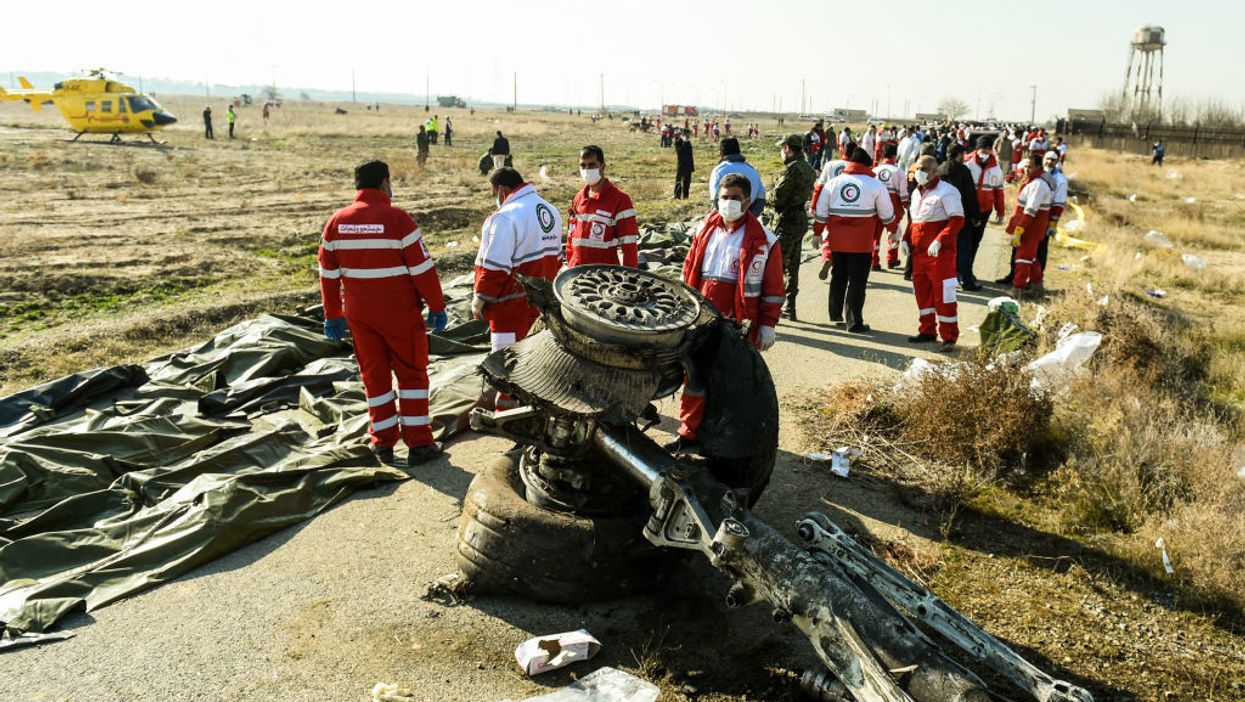
Ali Mohammadi/Bloomberg via Getty Images

Not 'engine failure'
U.S. officials and Ukrainian investigators said Thursday that they believe a missile likely caused Ukrainian International Airlines Flight 752 to crash near Tehran Wednesday, killing all 176 passengers on board, the Washington Post reported.
A team of 45 experts and search-and-rescue personnel arrived from Ukraine to investigate the incident, saying in addition to engine failure, they were looking into a missile attack or a terrorist attack as the possible cause.
According to a report by Newsweek, two U.S. officials and one Iraqi intelligence official also believe the crash was a result of Iran firing an anti-aircraft missile into the plane. The U.S. officials added that the Pentagon has assessed the firing as "accidental." They noted that Iran's anti-aircraft systems were likely active following the country's missile attacks on military facilities housing U.S. troops Tuesday night.
CBS News reporter, Kris Van Cleave, confirmed the news on Twitter, saying U.S. officials are "confident" the flight was shot down after intelligence picked up signals of the radar being turned on and satellite detected infrared blips of two missile launches.
Ukraine National Security and Defense Council Secretary Oleksiy Danylov
wrote on Facebook Thursday that his team would search for debris from a Russian Tor air defense missile after reading various reports online saying fragments were discovered near the crash site.
According to Al Jazeera, Danylov confirmed to reporters that his team "intends to look for the debris of a Russian Tor air defense missile" while investigating a wide array of possibilities including "an explosion inside the plane as a result of a terrorist attack," a collision with another flying object or the explosion of one of the engines.
The outlet also noted that Russia has for decades supplied Iran with sophisticated weaponry, including Tor M1 missiles in 2007.
Preliminary investigation by Iran's Civil Aviation Organization cited witness accounts that recalled that the plane was on fire before it hit the ground, suggesting that the cause of the crash may not have been "engine failure" as Iranian investigators initially concluded.
The Post reported that "several independent aviation experts have noted that, based on video and the wide debris field, it appeared the Boeing 737 800 was breaking apart in the air."
A surveillance video posted on Twitter by Iran's state broadcaster appears to show a fiery orange glow interrupt early morning darkness before flaming debris scattering over a wide area.
Immediately after the crash, Iranian officials said the plane had encountered technical problems, but investigation reports noted that no distress call ever came from the aircraft. Iranian investigators also retrieved the black box, or the flight recorder, Wednesday, but Iran announced that they would not hand it over to Boeing or the U.S.
The plane crashed just 10 minutes after departing from Tehran en route to Kyiv, Ukraine, Wednesday, appearing to burst into flames in mid-air.
FlightRadar24 had reported that the plane lost contact with the control center only two minutes after take-off. After reaching a flight altitude of 8,000 feet it turned back toward the airport, evidently encountering a problem.
The notion that the plane encountered such a catastrophic technical problem was called into question after Ukraine International Airlines said on Wednesday that the plane involved in the crash was one of the best in its fleet and that its pilots were very experienced.
According to Business Insider, the airliner, a Boeing 737-800 NG, was just three years old and had been recently tested two days prior to the flight.
The day of the crash the entire region was under duress. The night before the flight, Iran had launched several missiles onto military facilities in Iraq housing U.S. troops. The missile launches came in response to a U.S. rocket strike last week that killed Iranian terrorist military leader Qassem Soleimani. Undoubtedly many Iranians were on edge, waiting to see how the U.S. would respond.